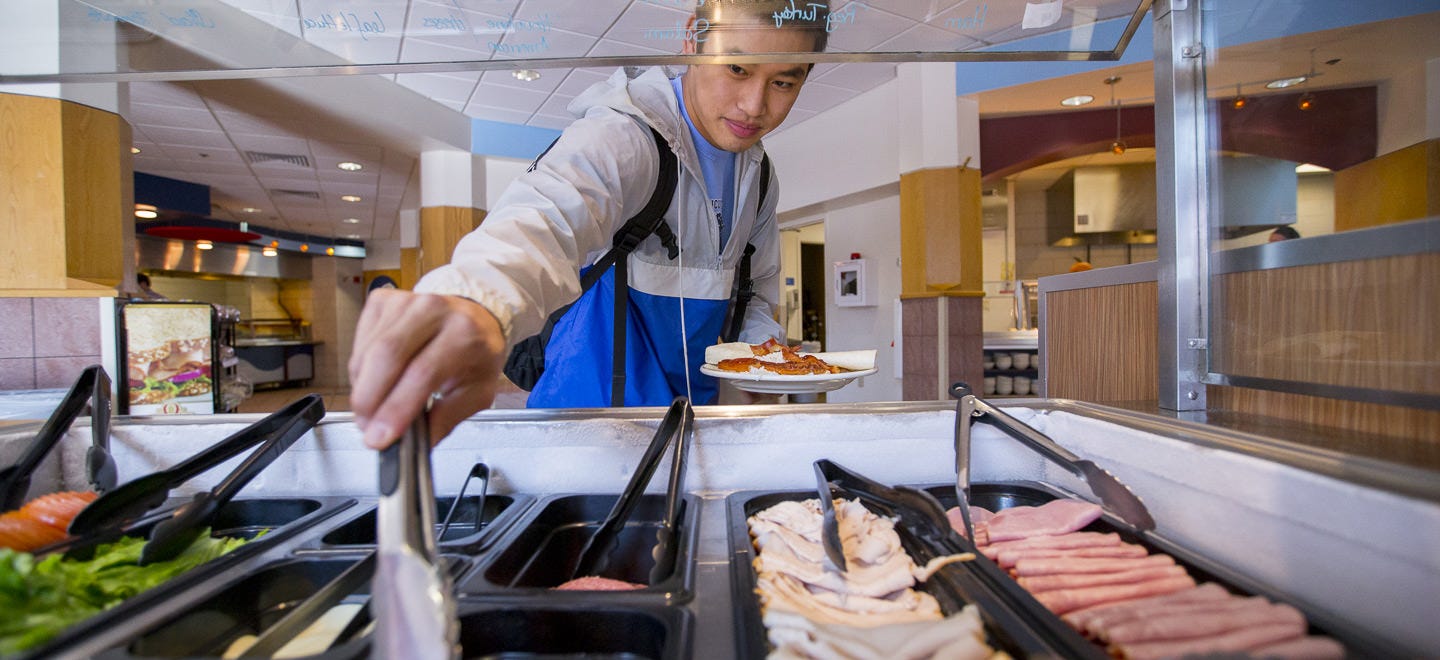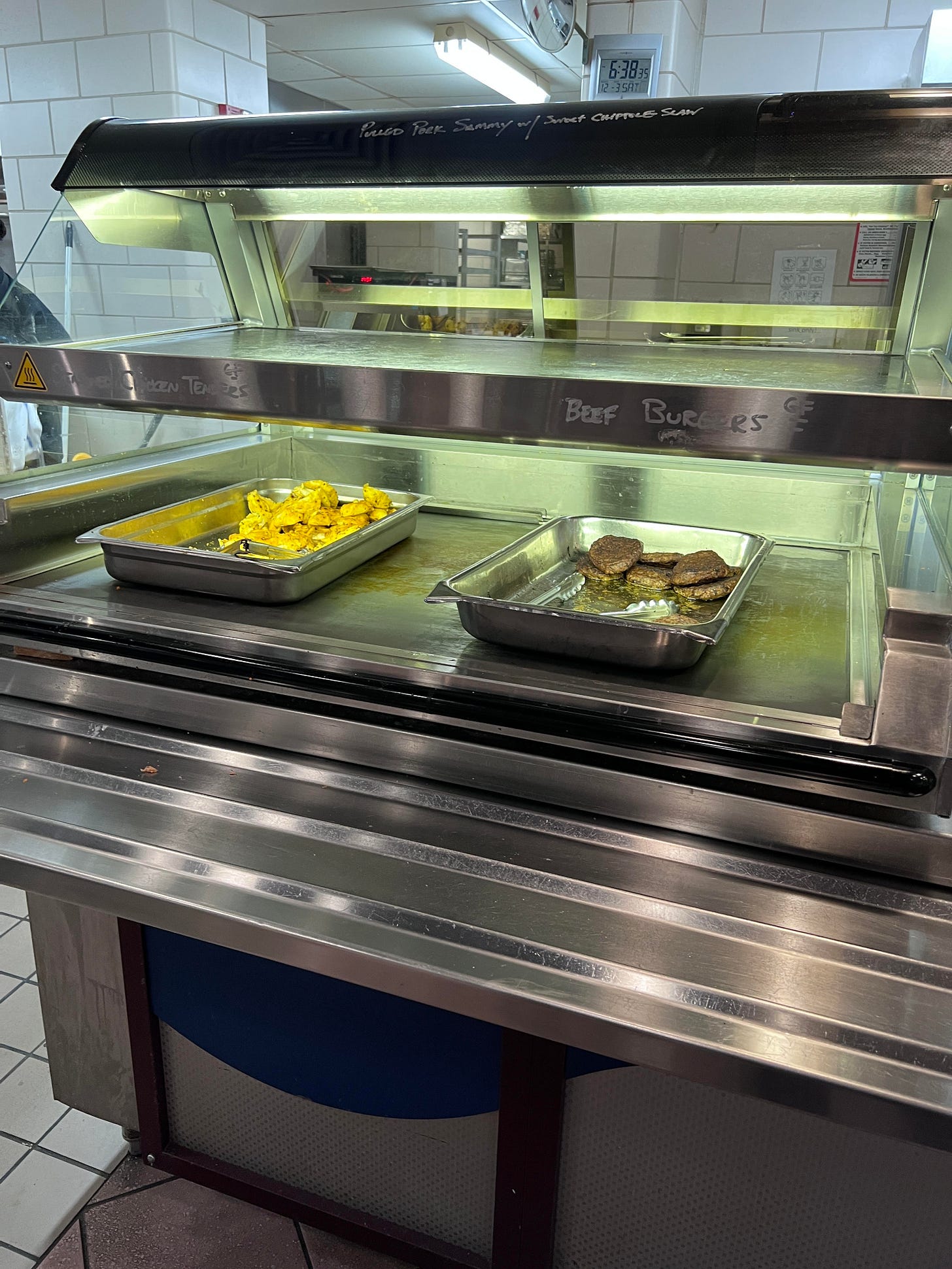The Unappetizing Reality of Harris Refectory
Harris "tests your ability to throw together a collection of foods that you can stomach and not be forced to deal with the consequences of 30 minutes later on the toilet," said one student.

We have all been here before. After a long day of classes and schoolwork, and for some, doubled with a tiring athletic practice, you head over to Harris Refectory for dinner. Afterall, it is the only dining hall open for dinner. Your expectations are not all that high—it is a college dining hall after all—but you still envision a decent, nourishing, substantive meal.
Then those hopes get body-slammed by the reality that is Harris’ food quality.
The rotating primary meal courses make for an exhilarating game of roulette, the Russian version that is. And looking at the dining menu ahead of time can be more stressful than looking at posted test scores. A build-your-own Caesar salad bar, filled with tasteless, low-quality lettuce and dispiriting mix-ins. Roast chicken night, which looks enticingly appetizing until you go to take a bite and find it to be almost entirely bone and rubbery tendon. Thin burger patties served under a heat lamp, submerged in a tray of their own grease and cooked beyond the point that I think I have had rarer beef jerky. And who can forget breakfast night, where you are offered the dry and clumpy scrambled eggs you rejected that morning.
Even the pasta, a safety-choice of many—myself included—tends to be underwhelming, overcooked to the extent that it obtains a mushy texture that melts in your mouth, paired with a tomato sauce that would be better disguised as tomato soup, and sprinkled with some parmesan cheese—haha nope, parmesan powder.
This is by no means the fault of Harris’ cooks. In fact, they are so exceptionally proficient in their roles that I shudder to think of the food outcome if in the hands of anyone even slightly less competent. The best food options are those prepared closest to the cooks: either food ordered at the grill or from the wok area. But despite their talent, it’s unreasonable to expect them to be miracle workers.
According to John “Jack” Callahan ‘24, Harris dining hall "tests your ability to throw together a collection of foods that you can stomach and not be forced to deal with the consequences of 30 minutes later on the toilet." He further describes the experience as "sweat[ing] in a locked up cafeteria with only fans to blow around the steam and smell of a student burning their bagels."
However, Callahan also notes that on the rare occasion when Harris offers something "tasty and even desirable" and "goes above and beyond by opening a window or two, the shock of it makes every other night a faded memory.”
Another student, Christopher Koskinen '24, raised the problem that Harris Refectory is not only lacking in food quality, but also in space. He stated, "Harris is way too small and way too crowded for one thing, and admitting more students than last class next year will make that problem worse." In addition to the cramped conditions, Koskinen also mentioned that the food is often overcooked or undercooked, with specific complaints about one of the grills not being fixed since the 2020-21 school year.
These experiences and complaints from students only further highlight the need for improvements in Harris Refectory, not just in terms of food quality but also in terms of space and attention to detail.
One particularly egregious example was when I found a piece of foil wrapper mixed in with my General Tso's chicken and rice, which not only ruined the meal but also raised concerns about future meals. As a result, I now make it a habit to inspect my food for macroplastics before eating.

Niche.com, a website that ranks colleges and universities based on student reviews, rated Connecticut College's campus food a C+. This poor grade is a testament to the overall dissatisfaction with the food quality at Harris Refectory. Connecticut College ranks 9th out of the 11 NESCAC schools for food quality, with only Amherst and Colby trailing behind.
That dismal C+ is also likely inflated due to the presence of Oasis and Jane Addams dining, both of which have higher food quality than Harris. However, Jane Addams is not accessible for dinner or on weekends, and students must pay extra for Oasis, further underscoring the need for improvements to the overall dining experience at Harris Refectory.
All in all, the administration should be taking steps to address the issue of poor food quality and lack of options at Harris Refectory. Whether it be by allocating more funds for better food or by consulting with students to find ways to make the dining experience more tolerable, something needs to be done. As it stands, students are left with few options beyond the $3,000 meal plan they are already paying for, and even then, they are at risk of finding macroplastics in their meals. Additionally, most students have no access to kitchens, further limiting their options. The quality of food at Harris Refectory is simply not up to par, and it's time for the administration to take notice and take action to improve it. While it may be unrealistic to expect an A grade for campus food (even though five NESCAC schools do), surely a B grade is not too much to ask.




